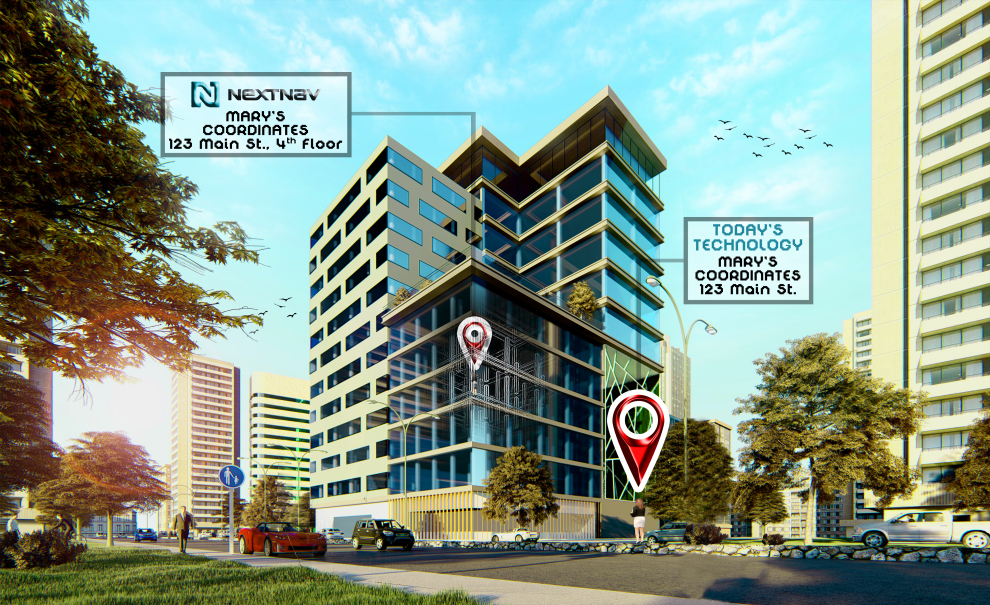Tech Vision is Localogy’s series that spotlights emerging tech. Running semi-weekly, it reports on new technologies that Localogy analysts track, including strategic implications for local commerce. See the full series here.
Tech startups are playing an important role in Covid-era problem-solving. So far, that’s everything from fast-tracked eCommerce tools for SMBs; to location-intelligence platforms pivoting to contact-tracing tech. Google and Apple’s joint effort is the most well-known example of the latter, as we recently examined.
But there are other focused approaches to contact tracing from the location intelligence startup community. The most notable example to appear on our radar screen recently is NextNav. It has tapped its core location intelligence platform for a new contact-tracing technology for state government and health officials.
Specifically, the technology applies NextNav’s specialization in what’s sometimes known as 3D location data. Most location data as we know it has two dimensions: lat/long. NextNav applies a Z-axis to get more precise readings in situations where elevation matters (think: multi-floor shopping malls, high-rise buildings, etc.).
This can add dimension (literally) and meaning to location signals in areas like emergency response and marketing. For example, ad targeting and attribution can be more accurate and thus insightful if you know someone just walked into the Banana Republic on the second floor, rather than the Hot Topic right below it.
In contact tracing, the stakes are obviously higher so the need for precision is more critical. As further background for contact-tracing methodologies (and how this fits in), NextNav VP of Data Partnerships Dan Hight recently broke it down for us. At a high level, the field is subdivided by three main approaches.
1. Peer-to-Peer or proximity
This is closest to the Google/Apple approach, and employes Bluetooth (BLE) to determine peoples’ proximity to each other. As we outlined in our recent post, a flag goes up when you’ve been in proximity to another device that’s been self-identified as a positive Covid case. That triggers a privately transmitted alert for your awareness.
2. Location separated by time
This approach uses the standard GPS signal from your device. It involves tracking if a positive Covid case occupied the same space as another device within a defined timeframe. This approach fills a gap left by approach #1: surfaces. Person-1 may not come within proximity of a Covid-positive Person-2, but still be at risk if Person-2 infected a common surface. Person-1 should ideally be alerted in this scenario, not to mention officials who can rapidly disinfect.
But… there are still gaps in this approach: Per the principles introduced above, this is GPS based (X,Y) and thus 2-dimensional.
3. Location separated by time and multi-story
Here’s where the Z-axis comes into play. This builds on approach #2 but adds the ability to pinpoint infected surfaces (or the rooms, suites or stores where they sit) within vertically stacked structures. Like #2, this has temporal relevance in alerting people and officials of proximity during the known duration of surface-transmission risk.
The third approach makes sense for lots of reasons. By definition, multi-story buildings are exactly where more precise contact tracing is needed. In other words, vertical construction tends to correlate to urban areas… where commercial districts and inherently-greater populations mean greater transmission risk.
”The COVID-19 pandemic has been devastating, and we believe one way to help mitigate the ongoing impact is trough a holistic, technology-driven contact tracing,” Hight told Localogy Insider. “Having high-precision vertical capabilities (Z-Axis) will provide critical data needed to complete the solution in dense urban areas and high-rise structures.”
We’ll keep following this added dimension to the contact-tracing storyline. For a technology like contact tracing, it’s all about comprehensive data, and a sort of network effect as we’ve examined. Gaps in tracking — whether by methodology or lack of opt-ins — is detrimental. So filling those gaps is the name of the game.



